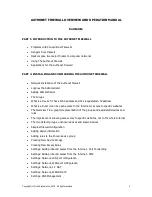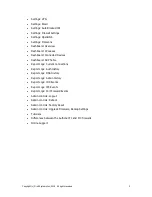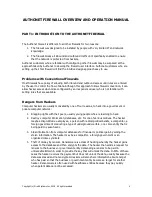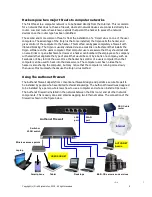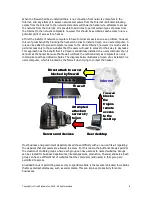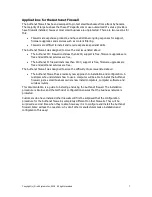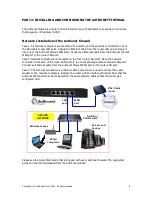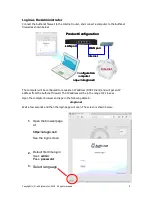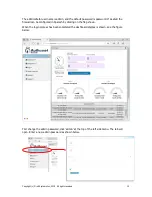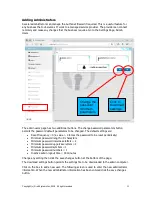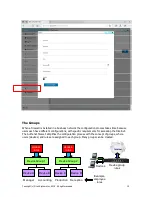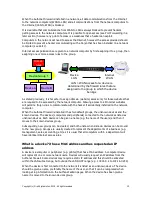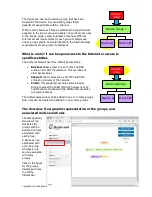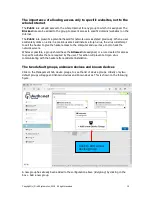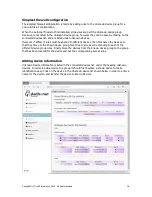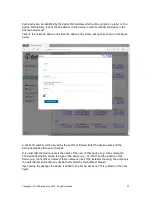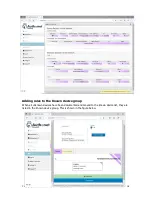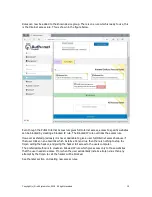
Copyright (c) Fire4 Systems Inc, 2019. All rights reserved
4
AUTHONET FIREWALL OVERVIEW AND OPERATION MANUAL
PART 1: INTRODUCTION TO THE AUTHONET FIREWALL
The Authonet firewall is different to all other firewalls for two reasons:
1. The firewall was designed to be installed by people with very limited IT and network
knowledge.
2. The firewall blocks all inbound and outbound traffic until specifically enabled to ensure
that the network is protected from hackers.
Authonet customers who are familiar with configuring other firewalls may be surprised at the
approach taken by Authonet to develop the firewall user interface. Authonet customers who are
setting up their first firewall will find the intuitive design approach easy to use.
Problems with Conventional Firewalls
Most firewalls have policy of allowing both inbound and outbound access until rules are entered
by the user to control the flow of data. Although this approach follows firewall convention, it can
allow hacker access when miss-configured by an inexperienced user who is not familiar with
setting rules that are available.
Dangers from Hackers
Computer hackers are usually motivated by one of four reasons, to hack into a government or
private computer network:
1. Bragging rights with their peers, usually young people who are learning to hack.
2. Destroy computer information, databases, etc. for one of various motives. The hacker
maybe a disgruntled ex-employee, a person with radical political beliefs, a competitor, a
foreign government conducting a type of underground warfare, or a crime entity that is
being paid to cause havoc.
3. Steal information from computer databases for financial or political gain by selling the
stolen information. The hacker may be a competitor, a foreign government or an
organized crime syndicate.
4. Theft of money by ransom. Ransomware is a class of hacking whereby the hacker gains
access to the database and then encrypts the data. The hacker then sends a request for
ransom to the business or government entity demanding a ransom to be paid in
untraceable Bitcoin in order to provide the key that will unlock the data. In 50% of these
cases the hacker receives the payment but does not unlock the data, usually because the
data was erased and not encrypted. Hackers will also share information about a target
who has paid so that the business or government entity becomes a target for another
hacker. Ransomware is often used with healthcare entities because they pay quickly
when patent data cannot be accessed.


